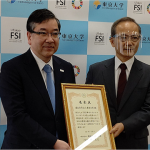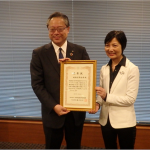RIEF published a draft guidance for " Adaptation Finance". Proposing to introduce three steps approach including setting "proxy cash flow" from projects (RIEF)
2023-07-18 15:36:41

The Research Institute for Environmental Finance(RIEF、based in Japan)published a draft paper of “Adaptation Finance Guidance”, which focusses on how to boost private financing into climate change adaptation projects. We expect to get your comments to the draft. Comments will be accepted by September 15, 2023.
Due to the intensification of climate change, abnormal weather phenomena such as heat waves, rising temperatures, drought damage, and forest fires are occurring frequently around the world including this summer. In response to the intensifying physical risks of climate change, there is an urgent need to develop climate adaptation projects and markets.
However, unlike climate mitigation projects such as renewable energy, the current adaptation projects are mainly dependent on public funds, and the introduction of private funds is limited. As a result, there are many cases where adaptation risks are about to materialize, but countermeasures are delayed due to lack of funds. Therefore, RIEF has developed a draft guidance for introducing private funds into the adaptation projects and markets.
The draft guidance was compiled in almost two years by establishing the Adaptation Finance Study Group, which consists of scholars, researchers and practitioners. We hope that the guidance will contribute to the expansion of adaptation finance not only in Japan but also in global markets. Comments on the proposal are widely invited. Please send your comments and questions by the end of August.
As described in the summary of the draft guidance, it proposes the establishment of a three-step approach to utilize private financing for climate change adaptation projects.
The first step is to establish a “business taxonomy” for adaptation projects where the funds of the adaptation fund will be used, and to clarify where the funds will be used. The second is to develop a “methodology taxonomy” that indicates the “method” used to estimate the expected future “cash flow” from the target adaptation projects and business.
In the third step, in order to visualize the expected cash flow estimated in the second step to financial institutions and investors, the issuer (user) of adaptation finance proposes to create a “proxy cash flow” to link the assumed expected cash flow and convert that value into present value. In addition to public institutions (national and local governments, etc.), it is desirable to create this cash flow from collaborators with public institutions and non-profit institutions, but we believe that initiatives led by private businesses are also possible.
The draft guidance positions such a framework as a “new blended finance scheme” for public-private partnerships.
https://rief-jp.org/wp-content/uploads/0cc7ff2199bf23c5595aabeb52db2646.pdf

































 Research Institute for Environmental Finance
Research Institute for Environmental Finance